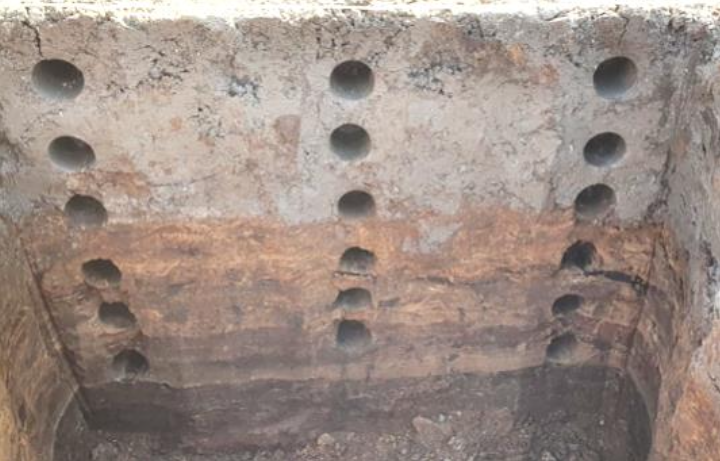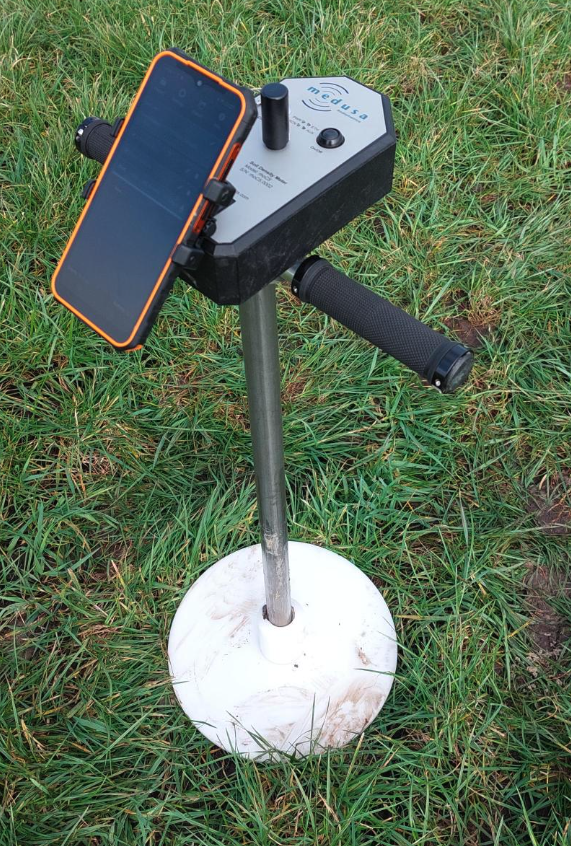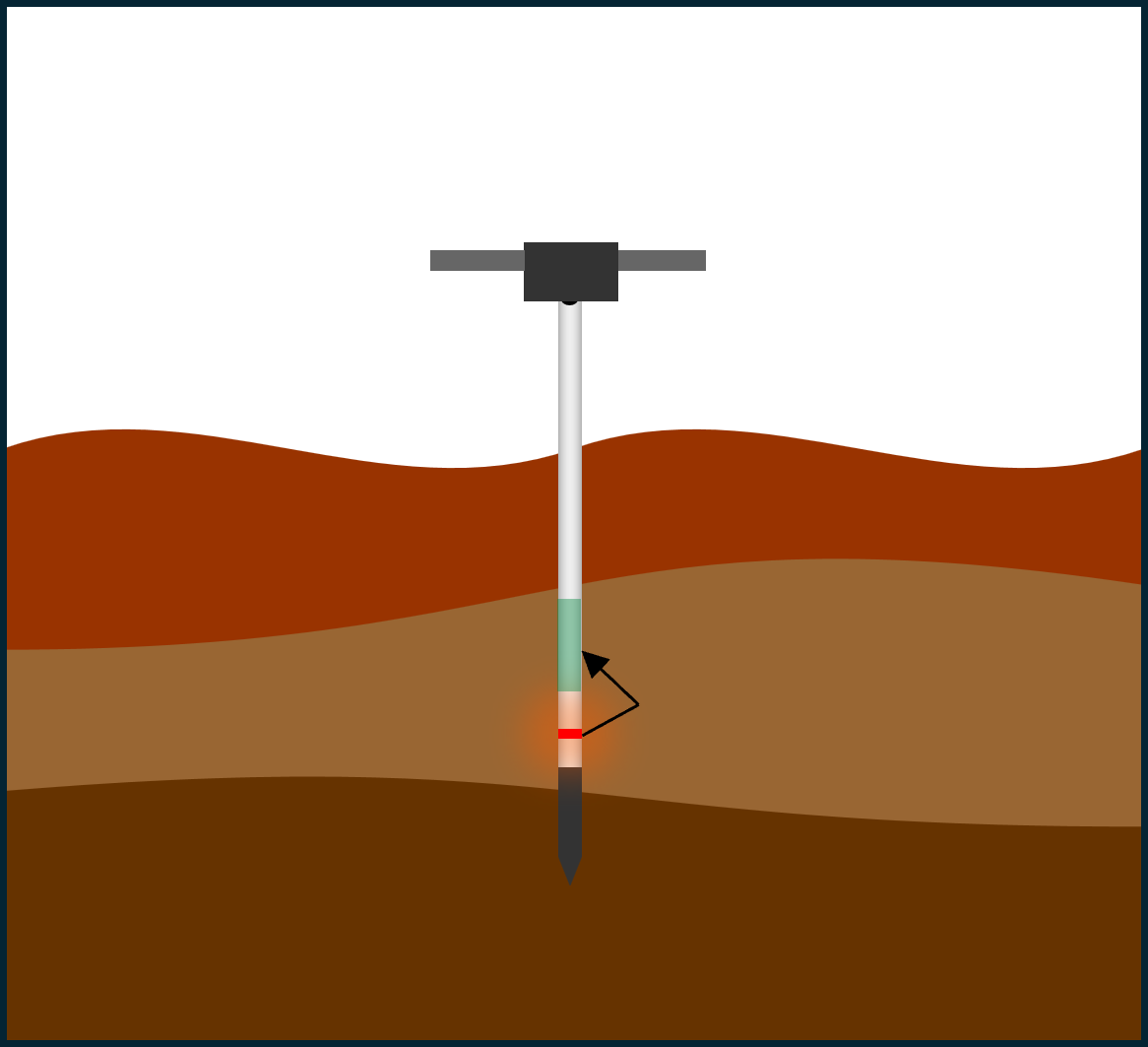Soil dry bulk density
Overview
Understanding physical properties of soil is essential for evaluating how soils support plant growth, retain water and respond to environmental changes. Characteristics such as texture, structure, and porosity influence these functions, and among them, bulk density plays a key role. In particular, dry bulk density (DBD) is a critical parameter for assessing soil compaction, understanding soil water infiltration and retention characteristics, and assessing/calculating soil (organic) carbon stocks.
DBD is gaining in importance as a soil parameter. For soil compaction, water infiltration, retention and rootability properties related to food production and climate change adaptation, but also as input to soil carbon content calculations and pedotransfer functions. The standard measurement of DBD with rings is labour-intensive and therefore expensive; existing sensor approaches require extraction of the soil core and are not widely used. As a possible solution to this challenge to measure DBD in situ, a sensor is developed that measures the DBD of a soil profile.
Definition and importance of dry bulk density
Since soil has a porous structure, it is difficult to define its density. Generally, in soil science, there are three important types of soil density definitions. Firstly, specific density (ρsd) is the ratio of the mass of oven-dried soil to the grain volume of the soil, which excludes the volume of the pores. In other words, it is the density that the soil would have if it were a single piece of solid with no pores. Secondly, field bulk density (ρfbd) is the ratio of the mass of soil to the bulk volume of the soil, which includes the moisture content and the pore space between the soil particles. Finally, dry bulk density (ρdbd) is the ratio of the mass of oven-dried soil to the bulk volume of the soil, which includes the pore space between the soil particles.
DBD is widely used to assess soil compaction, as higher DBD values often indicate reduced pore space, which can restrict root growth and limit air and water movement. It also plays a key role in understanding soil water infiltration and retention. Soils with lower DBD generally have higher porosity, allowing better water infiltration and greater water-holding capacity. Additionally, DBD is crucial for estimating soil carbon stocks, especially organic carbon. By multiplying the concentration of organic carbon by the DBD and soil depth, researchers can calculate the total carbon stored in a soil profile. This is essential for evaluating soil health, monitoring land use changes, and modelling carbon sequestration in the context of climate change.
Measuring dry bulk density
The traditional method for measuring soil bulk density involves inserting a metal cylinder of known volume (such as a Kopecky ring) into the soil to extract an intact core. Bulk density is then calculated by dividing the oven-dried mass of the soil by the volume of the core. This process requires skill, as obtaining an undisturbed sample is challenging but essential for accurate results.

Holes dug to measure DBD with Kopecky rings
Any disturbance, such as soil loss or compression during sampling, can lead to incorrect density values. In addition to being labour-intensive, time-consuming, and costly, the method is prone to user-related errors and requires access to laboratory equipment for drying and weighing the samples.
RhoC5 soil density sensor
The Medusa Radiometrics rhoC5 measures field bulk density and soil moisture content directly in the field. There is a depth sensor that can measure up to 80 centimetres deep. rhoC5 only needs a hole of 30 mm diameter for measurements.

A measurement with rhoC5
With this sensor, there is no need for a soil pit or any laboratory work to determine soil bulk density. The sensor provides the measured densities, soil moisture, measurement depth and location in real time. This allows the soil scientist to gather more information on the vertical as well as the horizontal scale. Users can perform DBD measurements at different depths at a point, and different locations in a field early.

The small red disk contains a radioactive 22Na source with a low activity below the exemption value. This source will radiate gamma-rays into the soil. rhoC5 has been calibrated to determine the field bulk density of soil based on the number of backscattered gamma-rays detected per second. The moisture sensor on rhoC5 measures the water content of the soil simultaneously. Using field bulk density and soil moisture, rhoC5 calculates “dry bulk density”, which is the actual density of the soil without its water content.
Conclusions
Dry bulk density is a key physical property for assessing soil structure, compaction, water dynamics, and carbon storage. While traditional measurement methods are accurate, they are often laborious and limited in spatial coverage. The rhoC5 sensor offers a practical alternative by enabling in situ, real-time measurements of bulk density and moisture, reducing the need for destructive sampling and lab work. This innovation enhances the efficiency and spatial resolution of soil assessments in both agricultural and environmental applications.
References
van der Veeke, S. (2023). UAV-borne radioelement mapping: towards a guideline and verification methods for geophysical field measurements. [Thesis fully internal (DIV), University of Groningen]. University of Groningen. https://doi.org/10.33612/diss.261264637
Pepers, K. H. J., van Egmond, F., Koomans, R., Teuling, K., Staats, G., & van Os, G. (2024). Validation of a new gamma ray soil bulk density sensor. European Journal of Soil Science, 75(4), e13542. https://doi.org/10.1111/ejss.13542
